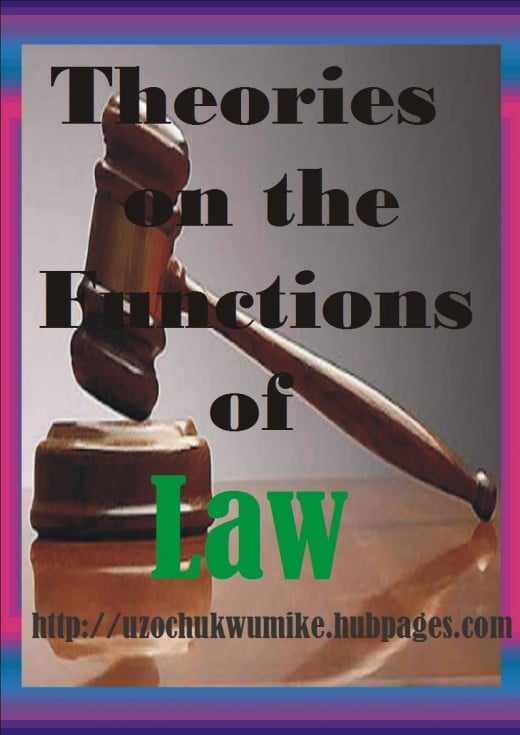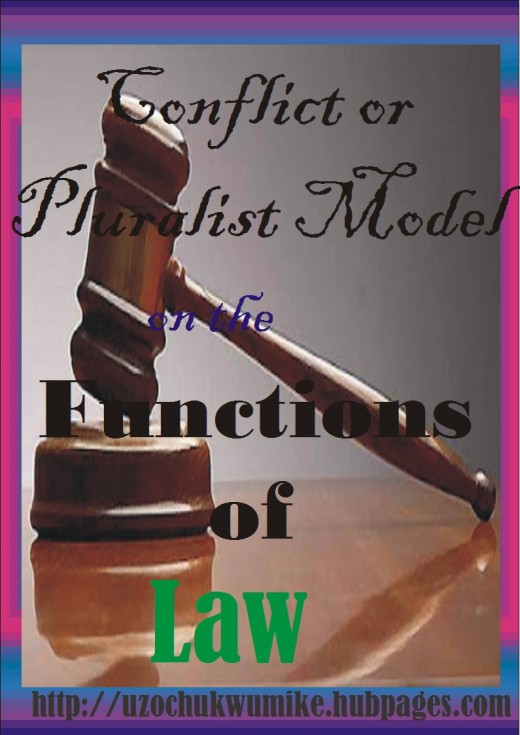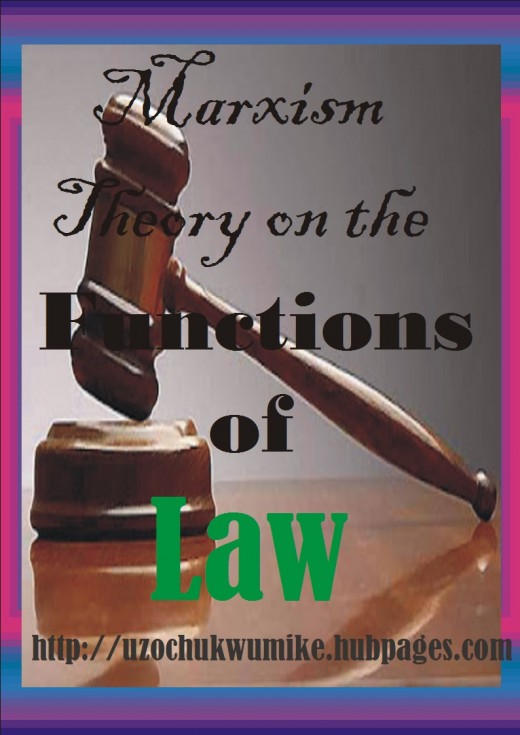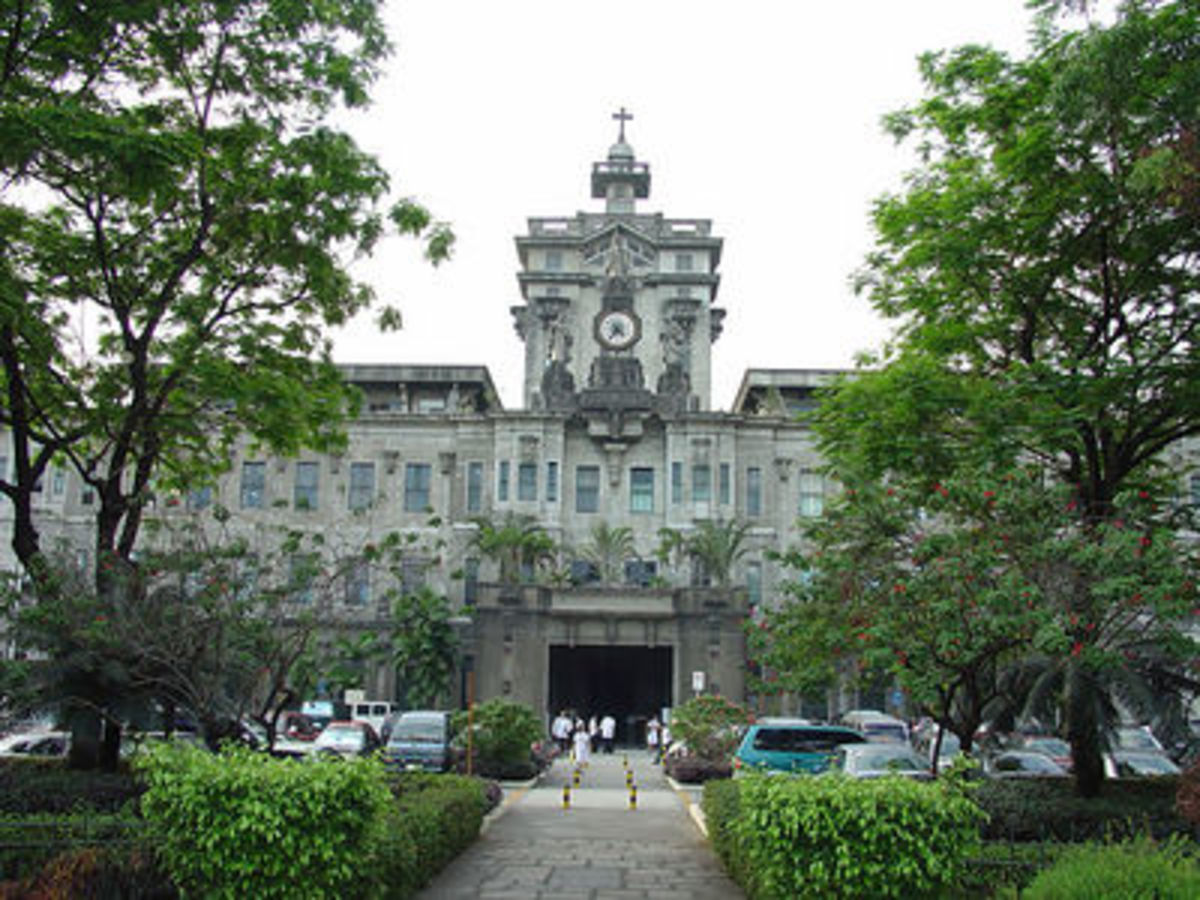Theories on the Functions of Law

The practice of Law comprises many theories from notable people who have good knowledge and understanding on Law and politics. These theories are based on the objectives and functions of Law. In time to come, you may be deeply in love with the study of Law and decide to propose a theory or theories on the functions of Law if you like, and the whole world will study and criticize them.
In this topic, the theories on the functions of Law are those according to Talcott Parson, Pareto, and Karl Marx. The theories proposed by these men attracted enough criticisms. Hence, the theories on the functions and objectives of Law are:
- Consensus Model;
- Conflict or Pluralist Model
- Open Model; and
- Marxism.
Consensus Model
The word “consensus” simply means general agreement. It is the theory that says that the function of Law is to protect the social values to which every member of the society belongs to.
Who proposed consensus model? The brain behind consensus model theory is known as Talcott Parson. Quoting Harris, he has this to say on the Consensus model theory “this model perceives Law as protecting social values to which everyone in the society subscribes”. Talcott Parson viewed society in his own way:
“….as basically unitary. Parliament represents us all, the executive acts in the common interest,… the Law is equal and just to all and is administered without fear or favour for the common good… conflicts that there are will be on personal level”.
According to Parson, he insists that the parliaments are there in the House of Representatives to protect and work for the good of the people that voted them into such positions. The question is: is it really true that those that are representing the society are doing anything that they are able to do to seek for the good of the society? When this is true, to what extent?
Criticism to this point brought about by Parson is that some members of the parliaments are into such positions for their own individual interests. The senators when making national policies made them without prior having the interests of the people that voted them into the positions in mind. It applies mostly in countries where there is high level of corruption. When policy of this nature is made, this usually results to protests.
The consensus theory was led into its conclusion because it concentrates its analysis on those elements within the society where there are obviously the need to maintain order and equilibrium while ignoring elements which tend towards social conflict and disintegration.
A critical examination of some elements or rules that are presented are areas of consensus may reveal that they are nothing but group, sectional or personal interests, which have been successfully presented as basic interest of all the society.
There is solid rejection of consensus theory by a lot of people due to many reasons. Some have rejected the consensus theory as the correct theory of how the society achieves social stability and equilibrium.

Conflict or Pluralist Model
This is another face of theories on the functions and objectives of Law. The theory denies that there is “shared value system” in our society. The theory is in opposition to that proposed by Talcott Parson. According to Talcott Parson, conflict does not happen among group of persons but on personal level. The conflict theory emerged to say that conflict takes place within a group of people.
According to Pareto theory, the existence of conflicting groups, all of which are assumed to have more or less equal bargaining-power and that the constant interaction and negotiation between the groups help to attain social stability and equilibrium.
Examining this theory, there are elements of truth in it. Taking for instance that there are rich and poor in a particular society, when the rich enjoy and spend money alone without involving the poor to gain from their ocean of wealth, conflict is likely to result. This crisis may come in the form of armed robbery which has the consequence of eliminating the life of the rich group of persons.
But, when the rich associates with the group of the poor may be by building industries where the poor work and make money also, there will be no conflict like armed robbery because the poor with time will become rich as he is paid by the industry of the rich ones. This association of the two groups becomes a way to achieve societal stability and equilibrium.
Taking the instance down to the legal system, a litigant requires the association of a lawyer to plead his case and such services often do not come cheap. Also, the entire structure, including the language of the judicial institutions, sometimes seems foreign and elitists that few people approach them for the settlement of disputes.
Conflict or Pluralist theory model is erroneous to some extent. First, it is erroneous to assume that the different interest groups in the society possess equal power to influence law-making and implementation of those Laws. Rather, the dominant groups are the ones that control the economic or political institutions of the society.
Open Model
This theory believes that the consensus and conflict model represent two extreme positions of what obtains in reality and tries to maintain balance between the two. According to this model, conflict will continue to occur between interest groups. The conflict can only be settled by legitimate process. The forms of conflicts that exist between the groups can either be settled through negotiation, arbitration, judicial decision and electoral battle, backed up with industrial action (strike) but without resort to revolution.

Marxism
Marxism theory on functions and objective of Law was proposed by Karl Marx. The German philosopher and social scientist has contributed a lot in the world of academic and other areas. He play important role through his theories in economics, Philosophy, and also in the study of Law.
In Marxism theory, Karl Marx stated that social stability and equilibrium is achieved in a society through the exploitation of the working class by the capitalist class. He strictly believed that without the exploitation, there is possibility of having societal disintegration in every community.
Capitalism is an economic system whereby the country’s business and industries are controlled by private individuals rather than the states. Because the economic activities are being controlled by individuals rather than the government, the private industries work hard to make more profits. From the growth of these industries and trades, the nations grow economically and this also propel the generation of employment to the citizens of countries and it is a good avenue in the fight against unemployment and poverty.
According to Marx, the exploitation of the capitalists by the ruling class will be a continuous occurrence as long as a bitter revolutionary confrontation could be avoided, and the most effective way of avoiding the exploitation is when the capitalists maintain the control of the official state institution. Many capitalist entrepreneurs in various democratic states have joined politics so that they will no longer be exploited by the ruling body.
Conclusion
Theories make subjects to be understood more practial. Formal education contains my theories from education founding fathers and that of Law is no exception.On many occasions, students are given assignment by their teachers or lecturers on the theories on the functions of Law. That is what this topic gives solution to. Discussed under this topic are the theories on the functions and objectives of Law. The theories featured the model proposed by noted men and the world icons including Karl Marx. These theories attracted some criticisms after their publications. Hence, the theories on the functions of Law as detailed out are consensus, conflict, open and Marxism models.
References
•Abiola Sanni (2006). “Introduction to Nigeria Legal Method”. Obafemi Awolowo University Press Limited, Nigeria.
•Dahrendorf R. (1959) “Class and Class Conflict in an Industrial Society”.
This content is accurate and true to the best of the author’s knowledge and is not meant to substitute for formal and individualized advice from a qualified professional.
© 2014 Uzochukwu Mike





